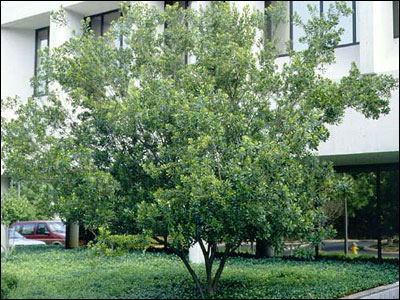
by Matthew Orwat | Nov 5, 2015

Waxmyrtle. Image Credit UF / IFAS Solutions
Myrica cerifera Southern Waxmyrtle, Bayberry is a large shrub to small tree that is now native to much of Florida and much of the Southeastern United States. It was introduced to Europeans in the 1700s and is considered native by many botanical authorities. Sources disagree to the validity of its native status. It is usually found as an understory plant in lightly forested areas, swamps, brackish areas, as well as around old home sites.
It was planted widely in the 18th,19th and early 20th century as a plant for medicinal and industrial purposes. Four pounds of its berries will yield one pound of wax for candle making. When processed, this wax was also used in surgeon’s soap, shaving lather, and sealing wax. Fermented leaves were used to produce a substance which was said to treat fever, stomach aches, and headaches.
Southern Waxmyrtle can reach up to 25 feet but is best maintained as a 10-20 foot multi-trunked shrub or small tree. It can also be trained as a smaller hedge and several dwarf form exist. Landscapes are enhanced by the shrubs’ olive green foliage, leaf aroma, open, rounded form and waxy blue-green berries. Wildlife enjoy the berries as a food source as well. They can provide dappled shade for outdoor entertainment spaces or front entrances.
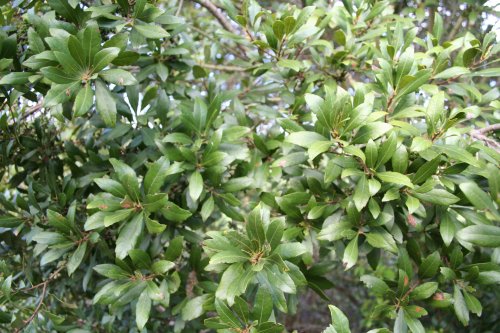
Waxmyrtle Leaves. Image Credit Brent Sellers – UF / IFAS Extension
Another benefit of Waxmyrtle is that it can be used in tough-to-landscape roadside and coastal areas since it is both pollution and salt tolerant and will cease to require irrigation once it is established. ‘Pumila’ is a dwarf cultivar suitable to small spaces.
Waxmyrtle is susceptible to few pests and diseases but can occasionally be attacked by webworms, mites and caterpillars. These can be controlled by pruning out of infested areas, forceful applications of water or Bt (Bacillus thuringiensis for caterpillar). It is also occasionally susceptible to canker on old branches and Fusarium wilt in central and south Florida. It is also considered a weed in pasture situations.
References:
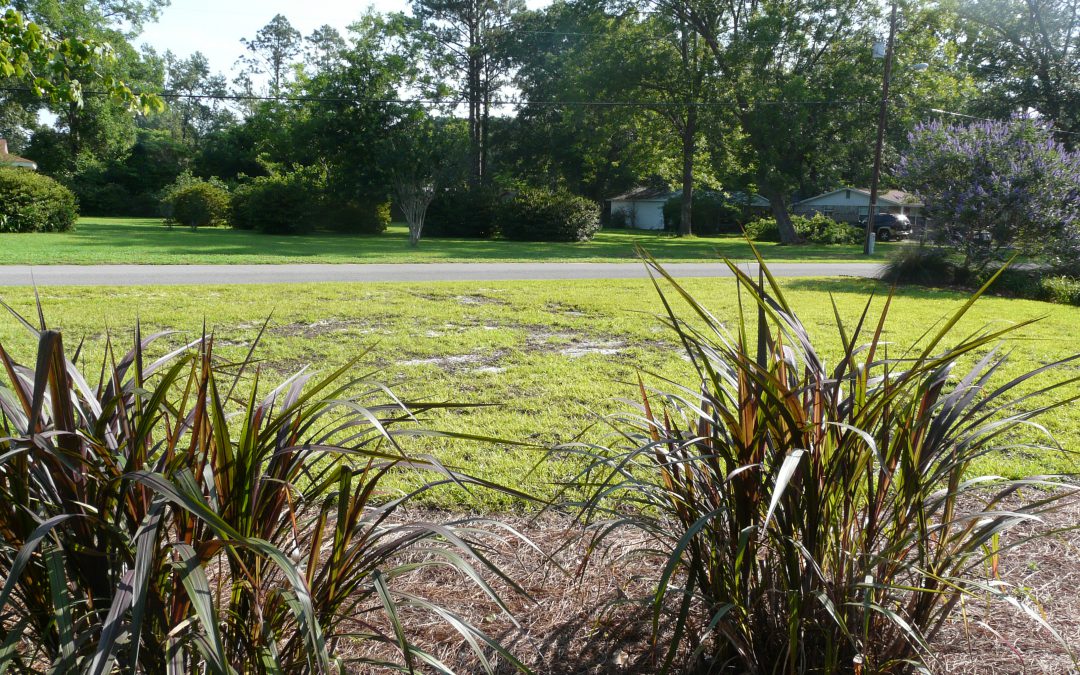
by Larry Williams | Nov 4, 2015
Fall is a good time to evaluate your landscape, learn from what has and what has not worked and formulate plans to improve your landscape.
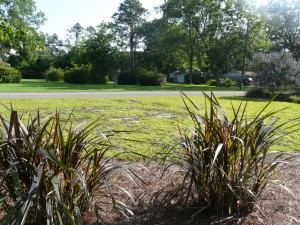
Evaluate problem areas in lawn. Photo Credit: Larry Williams
Before your lawn and landscape plants go dormant, do a walk through of your landscape, make notes if necessary and visually inspect the plants. You get to see the plants that did great as well as the plants that were not so successful. You can make decisions on which plants to do away with, which to keep, which that might benefit from being moved to a more appropriate location, etc.
As you inspect your landscape, ask yourself questions. You can easily identify problem areas in the lawn now. As you identify problem areas in the lawn, attempt to determine why those areas aren’t doing so well. Begin formulating plans for correcting/improving those problem areas. Decide if renovating and replanting with grass is your best option. Or, something other than grass may be the best option, particularly if there is a history of problems with grass in a specific location.
It may be time to remove and replace an older, declining plant with something new. There may be a plant that hasn’t performed up to par but that would do better if moved to a more appropriate location – fall is a great time to relocate plants. Now is a good time to take a soil sample and take the guesswork out of liming or fertilizing. The UF / IFAS Extension Office in your County can provide information on how to have your soil tested.
This only represents a few ideas related to evaluating your landscape. You’ll probably think of many more as you’re out in the landscape. Taking notes will allow you to implement your ideas later.
Not only is fall a great time to enjoy the outdoors, there’s much that we can learn from our own landscapes this time of year. We can gather Information that will allow us to improve our own landscapes.

by Matt Lollar | Oct 20, 2015
Warm and wet weather in the Florida Panhandle presents the optimum conditions for the development of bacterial gall on loropetalums. Shoot dieback is usually the first and most noticeable symptom of the disease. The dieback can be followed down the branch to dark colored, warty galls that vary in size. The galls enlarge and eventually encircle the branch resulting in branch or plant death. Olive, oleander, and ligustrum are also hosts for the bacteria that causes the galls, Pseudomonas savastanoi.
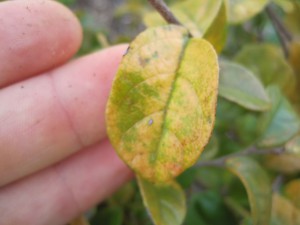
Dieback symptoms on loropetalum leaf from bacterial gall. Photo Credit: Matt Lollar, University of Florida/IFAS
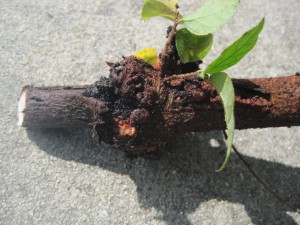
Bacterial gall on loropetalum. Photo Credit: Matt Lollar, University of Florida/IFAS
The most common source of bacterial gall is from the plant nursery. Prior to purchase, inspect plants for galls near the soil line. If plants have already been installed in the landscape, remove any branches containing galls. Pruning cuts should be made several inches below the gall. After each cut, dip pruners in a 10% bleach solution or spray with isopropyl alcohol to avoid spreading the disease to other parts of the plant or other plants. Prune during dry weather.
The best control for bacterial gall is selecting good quality plant material. For more information on this disease, please visit: Bacterial Gall on Loropetalum. More information on disease issues in the home landscape can be found at: Lawn and Garden Plant Diseases.
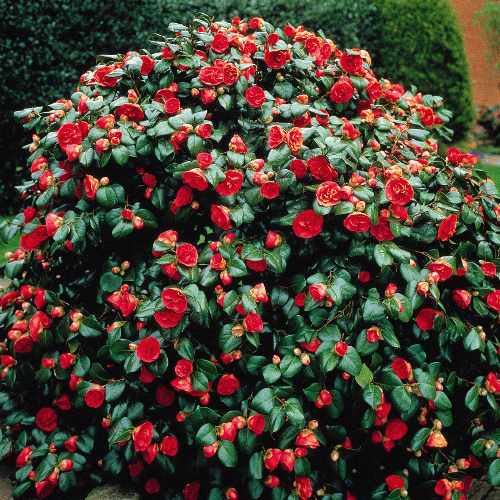
by Julie McConnell | Oct 15, 2015
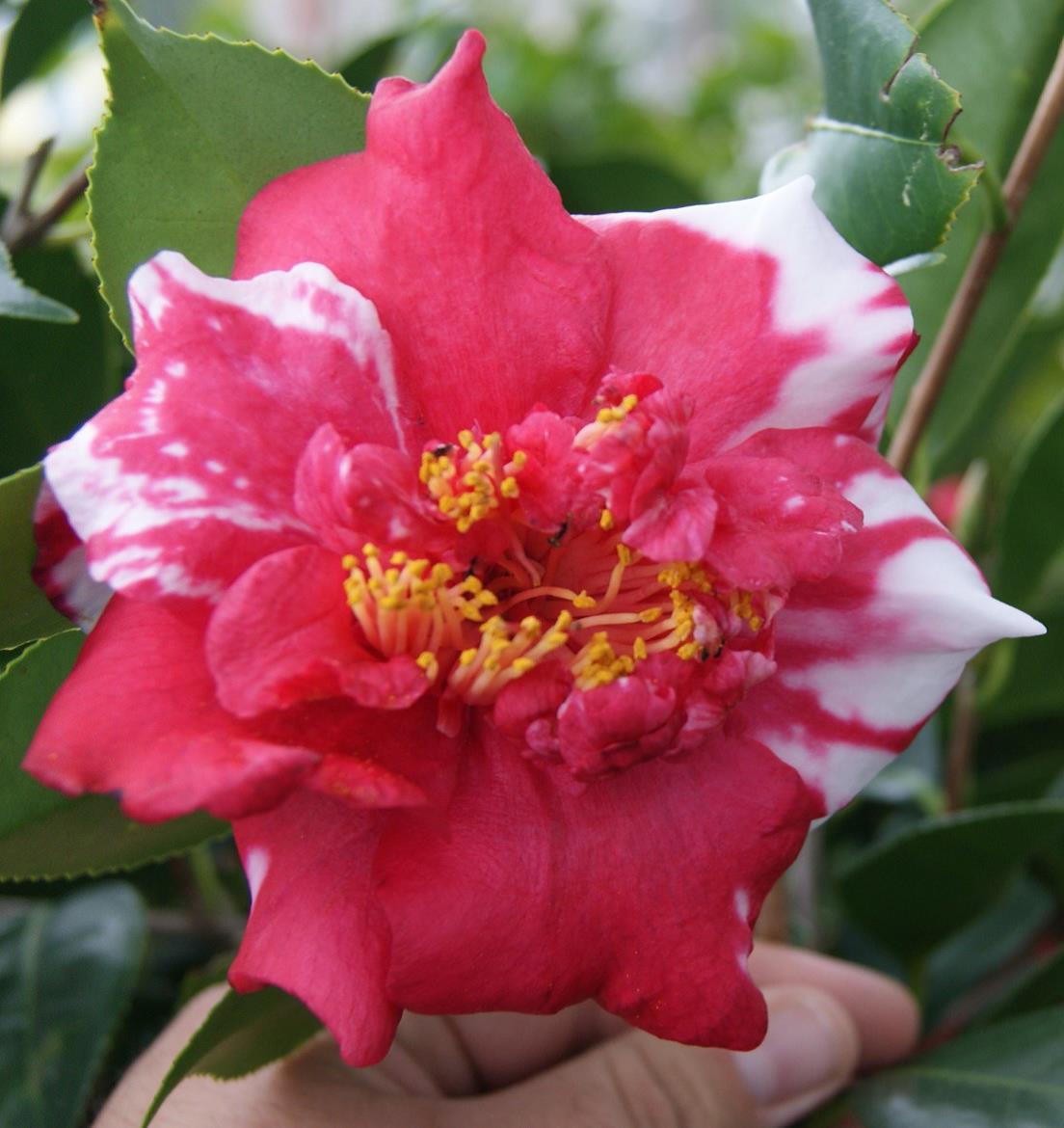
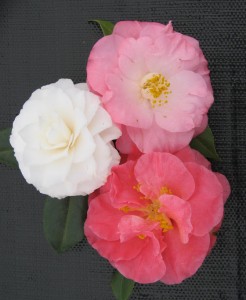
White by the Gate, Magnoliaeflora, and Spellbound camellia flowers
Are you looking for an evergreen shrub with showy flowers in the fall or winter? Look no further than an old Southern favorite, the camellia.
Large camellias dot landscapes of historic homes throughout the Florida Panhandle, and although they look like they’ve been here forever.
Camellias are not native to North America, but were originally brought here from Asia in 1797. There are many different types, but the most common camellias found in Florida are Camellia sasanqua which bloom in the fall (October – December) and Camellia japonica with larger leaves and a later bloom time of January through March. Some other types of camellias are Camellia reticulata, C. hiemalis, C. vernails and their hybrids; and Camellia sinensis is the source of tea which is made from the young leaves of this plant.
Flower colors range from a crisp white to a deep crimson and there are even some cultivars with variegated flowers! There are six recognized flower forms and they are single, semi-double, anemone, peony, formal double, and rose form double. Although most camellias have the potential to get over ten feet tall and five feet wide, there are some that grow slower and can be maintained at lower heights. Camellia sasanqua ‘Bonanza’ and C. sasanqua ‘Shishi Gashira’ have more horizontal branching habits and can be kept under five feet tall, however they will need more width than a more upright growing camellia.
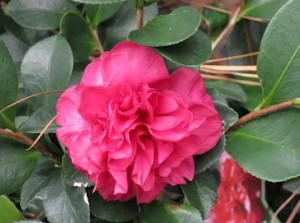
Camellia sasanqua ‘Bonanza’
When choosing a site for your camellia, look for an area with light shade, good air flow, and well-drained soil. Test your soil to determine pH and fertilizer needs before planting; soil testing kits can be picked up at your local county extension office. Camellias prefer acidic soil with a target pH range of 5.0 to 6.5, and benefit from organic matter amendments in sandy soil. Plant camellias slightly higher than the natural grade; dig a hole that is wide and shallow. After planting check that the top of the root ball is one to two inches above the soil line to allow for some settling. Mulching helps to conserve moisture and regulate soil temperatures, but be careful not to cover the root ball with thick mulch layers.
For more information about camellias and their care in Florida, please see Camellias at a Glance at http://edis.ifas.ufl.edu/pdffiles/EP/EP00200.pdf .
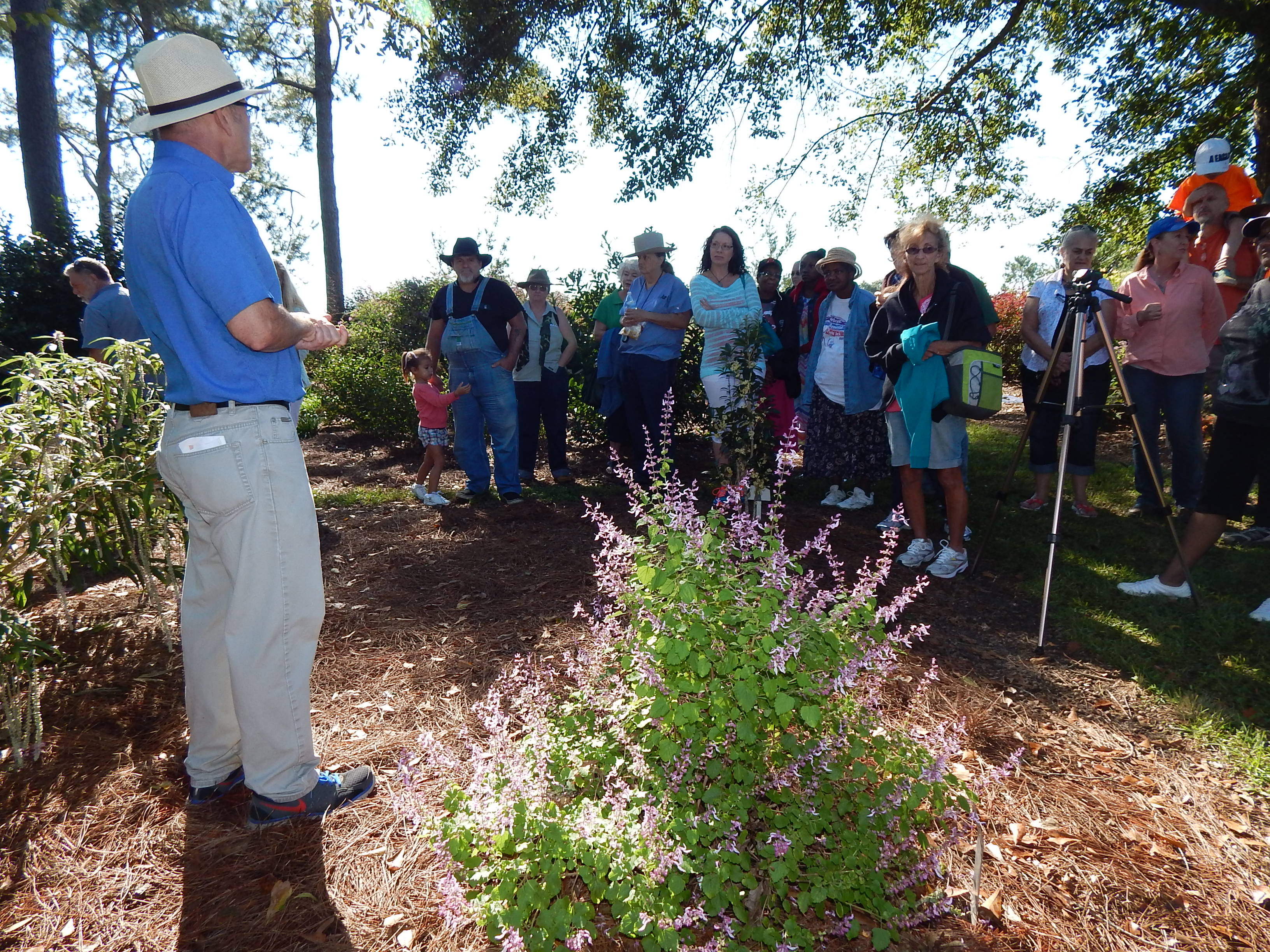
by Gary Knox | Sep 28, 2015
The University of Florida/IFAS presents Art & Garden Fall Family Festival, October 3, at the North Florida Research and Education Center (NFREC), Quincy Campus. Join us that day and discover creative ways to explore visual art and the art of gardening through demonstrations and fun activities for the whole family. Speak with experts about all your gardening questions or purchase unusual, hard-to-find, top-performing plants for our area. Take a tour of the Gardens or a trolley ride highlighting fruits and nuts that can be grown in our area. Locally grown produce and garden plants as well as arts and crafts will be for sale along with food and refreshments. Children’s arts and crafts activities will take place in a huge “Kid Zone” located in a shaded, garden area.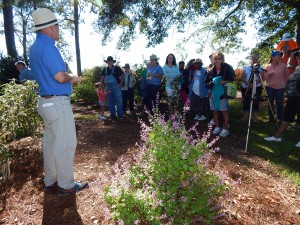
The Art & Garden Fall Festival is free and open to the public from 9 a.m. to 2 p.m. on Saturday, October 3.
The festival takes place in Gardens of the Big Bend, located in Quincy at I-10 Exit 181, just 1/8 mile north on Pat Thomas Highway (SR 267). The Gardens are located on the campus of University of Florida/IFAS, North Florida Research and Education Center, off Pat Thomas Parkway, SR 267 at 155 Research Road, Quincy, FL. Located just north of I-10 Exit 181, 3 miles south of Quincy.
Presented by the University of Florida/IFAS, North Florida Research and Education Center in collaboration with the Gadsden Arts Center, Gardening Friends of the Big Bend, the Quincy Garden Club and other area garden and arts organizations.
For more information: http://nfrec.ifas.ufl.edu/art-and-garden/ or 850-875-7100.
by Matthew Orwat | Sep 9, 2015

Azaleas pruned late in the fall will have little or no bloom in the spring. Image Credit: Matthew Orwat
As fall approaches, our spring blooming shrubs such as gardenia, spirea and azalea begin to look unkempt and overgrown. That means it is time to give them a severe pruning to get them ready for winter, right? Not so fast, take a minute to understand the growth habit of each species before diving in with the pruning shears.
Azalea:
Many do not understand that annual spring azalea bloom could be sacrificed completely by pruning spring blooming azaleas at the wrong time.
Pruning traditional azaleas in the fall will result in a loss of spring bloom the following year because most bloom on previous years’ wood. This means that they flower on growth put on throughout the previous growing season. If a gardener removes the previous season’s new growth, they are removing the blooms as well.
So, when is the proper time to prune azaleas? The ideal time to prune is directly after the spring bloom. This will give the plant enough time to generate abundant new growth, thus maximizing bloom next spring.
Even the developers of the Encore Azalea, a new repeat blooming type, recommend pruning as soon after the spring bloom as possible to maximize bloom set for the following year.
For more information on pruning azaleas or on general azalea culture, please read the UF / IFAS publication Azaleas at a Glance or check out the Pruning Azalea page on Gardening in a Minute.
Gardenia:

Gardenia, Image Credit Dan Culbert.
Gardenias don’t need much pruning except to remove any dead or non-productive wood, to help them remain bushy, and to remain the same size as other plants in the landscape. Choose a cultivar that will mimic the size of other shrubs, not one too large for the area. Pruning should be done as soon after the summer bloom as possible. Pruning after the beginning of fall will reduce the next year’s bloom production. Know your cultivar. Some cultivars of gardenia flower on new wood as well as old, while some flower on old wood only.
Spiraea:
Regarding spiraea, prune after the bloom as needed. The closer to the late summer or autumn, the greater negative effect pruning will have on bloom quality since spirea set their bloom in early autumn.
I hope this article prevented a few pruning disasters as well as started a thinking process for the act of pruning your landscape plants.















